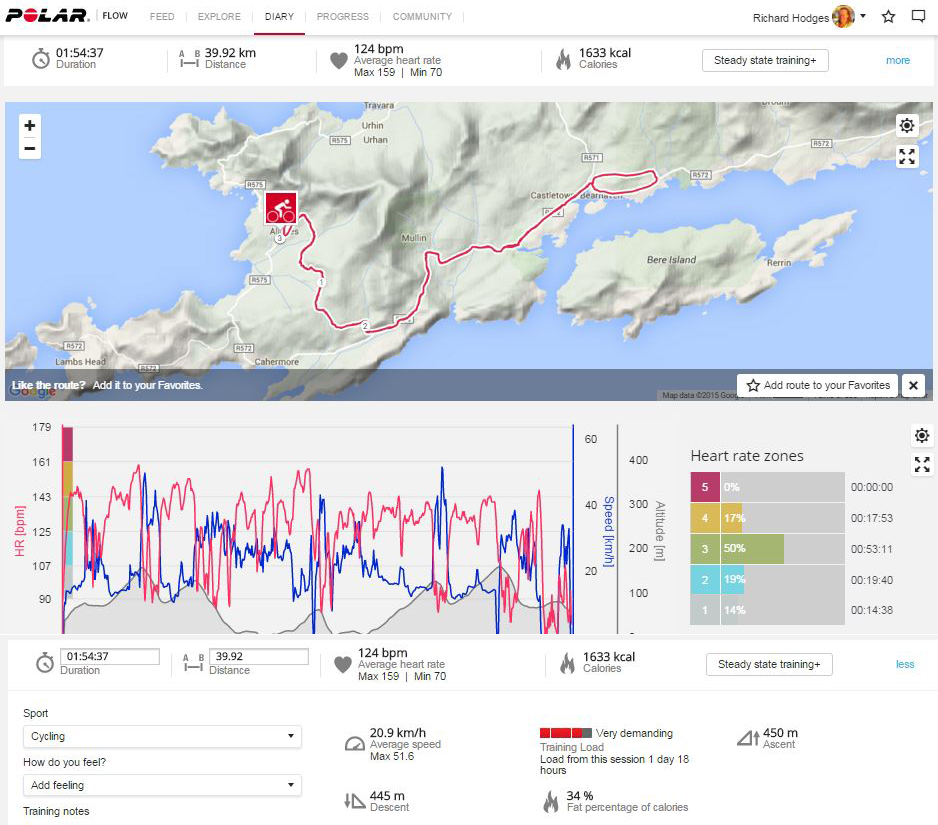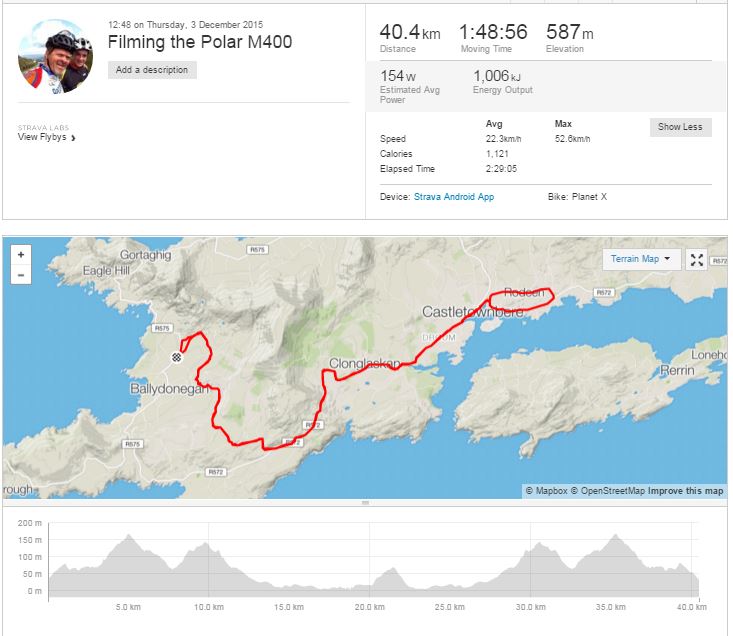Polar M400 Fitness Watch, is a fairly new device that has an integrated Heart Rate Monitor and GPS system. As well as a device that recognises when the wearer is moving. Therefore it works out during each day how much exercise you have been doing. It can be used in three modes.
1. Just wear the watch and the device recognises movement, therefore exercise
2. Turn on the GPS, walk the dog and it will track your walk and recognise your efforts
3. Wear the heart rate chest strap do the same walk and it will work out more precisely your effort.
Polar M400 Fitness Watch
For example take the dog for a 3KM walk, which just wearing the Polar M400 Fitness Watch works out to 33 %. As does wearing the watch and turning on the GPS 33% . Or use the HRM and GPS and the same walk works out to 50% of your daily needs.
The watch is quite clever and needs to know your height, weight, age and gender to work these things out. Also via the polar website you can hook up your watch and tell it more information such as your BMI and how much exercise you would expect to do in a week..
I bought the Polar M400 Fitness Watch as I do a bit of cycling, obviously there are cycling specific devices that attach to the handle bars which is what I could have gone for, the reason I went for the watch is that I also do a fair bit of walking on the roads or in the hills and want to be able to use the device to calculate my efforts and fitness. So I use a piece of foam to thicken the bar and strap the watch to the bars, it is easy to read (even for my old eyes) and I don’t need to remove my hands from the bars.
A short video showing some of the screens
There are four built in sport settings for the watch including cycling so the device is good for cycling too. If you use the polar website app you can configure extra activities too, however I have not done this.
If you have never used a HRM before it will work out your training zones. There are two main options for working out zones and the polar uses the simple percentage of maximum system. It creates five zones. I won’t go too much into detail but basically most training should be done in the zones 1 – 3, Zone 1 is very easy and is a recovery zone that is also good for burning fat, where as zone 3 is a reasonably hard zone that you should be able to keep up for a few hours, mainly burning carbohydrates. Zone 2 is in the middle. Zone 4 and 5 are fairly flat out and on the limit and would mainly be used during races etc. The other main system has six zones which are worked out of percentages of your working zone (Max minus Minimum HRM) The problem as far as cycling is concerned is that most riders train to hard, the Zone 2 is a perfect place to be to increase endurance and train the heart to do be more efficient. What happens to most riders is as soon as a hill comes they go over zone 3 into 4 or beyond which actually is not so good for the training. This is my number one reason to buy the HRM as I need to slow down on the hills to stay in my good zone. Also, and good to know for lots of people, if your main goal is to lose weight you don’t have to go hard, you need to stick to zone 1. But it is all about time, so you need to do TITS…. time in the saddle… Obviously it is not just about cycling and power walking in Zone 1 is better for losing weight than power walking in zone 3. Without going over the top. Two hours in Zone 1 is better for burning fat than 2 hours in Zone 3. But two hours in Zone 3 is a better work out for your body, it all depends what your objective is.
Back to the watch I have been using it for a few weeks now, on the bike I rarely scroll through the different screens, there are multiple screens per activity. But distance time and heart rate are what I want to know. It also works out average speeds, times in different zones, altitude etc. Oh and altitude is the watches biggest problem, way out and if I started syncing the watch with strava I would not get any where near the climbing in meters that I actually do. So polar could do with fixing that.
The Polar data from a ride, the height gain is noted as 450 Meters Where as in the Strava data from the same ride coming from an Android device it is 587 Meters (below), that is a big loss of climbing and can be checked using a OS map at the high points. The distance difference is due to my method of standby being different on the two devices.
The battery is charged using an android type smart phone charger and the watch will go for days on end no problem. However with the GPS and HRM turned on I doubt that it would do the 8 hours Polar say it will. If I was going for a long 160KM cycle I would make sure it was fully charged before I set off. Maybe this will improve with time.
Would I recommend the Polar M400 fitness watch to others, yes and no. Yes if you have never used a HRM GPS before and want somewhere fairly easy to start. No, if you have a good idea how it all works, in that case maybe spend a bit more and get something a bit better. Or forget the GPS and just buy a HRM for about 60€. Also if it is your only device and altitude is important, No… I do like it though and am happy enough, especially at the price.
The Polar M400 Fitness Watch website page for the Polar M400
This post follows on from November No Drinker if you like this post please use the Social Media Buttons Below, cheers


